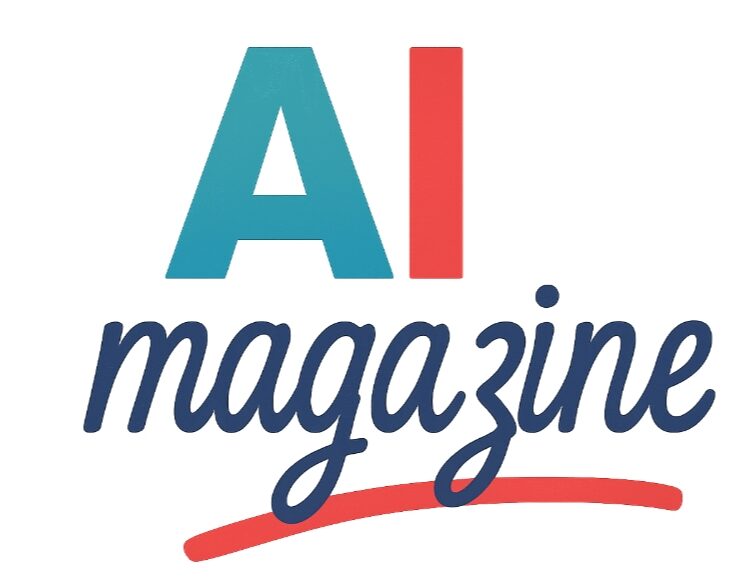Introduction
In a world driven by rapidly advancing technology, staying ahead of the curve requires constant innovation and adaptation. One such advancement is the introduction of Cilfqtacmitd, a groundbreaking system that promises to revolutionize multiple industries. Yet, as with any new technology, it is important to fully understand what Cilfqtacmitd is, how it can be applied, and whether using a lot of it can truly make a difference. In this article, we will dive deep into the core components of Cilfqtacmitd, explore its numerous applications across various sectors, evaluate its benefits and challenges, and discuss how it can be successfully implemented for optimal results.
What Is Cilfqtacmitd?
Definition and Overview
Cilfqtacmitd stands for Configurable Intelligent Layered Framework for Quantitative Tracking and Adaptive Cognitive Management in Integrated Tech Domains. At first glance, this may seem like a mouthful, but when broken down, it is essentially a highly flexible, intelligent framework designed to tackle complex challenges in various industries. Unlike conventional systems that tend to be rigid and specialized, Cilfqtacmitd is built with adaptability at its core, allowing organizations across industries to customize and modify its modules according to their specific needs.
The power of Cilfqtacmitd lies in its ability to integrate multiple functionalities in a single, cohesive system. By incorporating artificial intelligence (AI), machine learning (ML), data analytics, and automation, Cilfqtacmitd facilitates real-time monitoring, predictive analytics, and decision-making processes. Whether it’s tracking key performance indicators (KPIs) or handling large datasets, Cilfqtacmitd optimizes operations in ways that were previously unimaginable. Its versatility and efficiency make it a game-changer, especially when dealing with intricate workflows or high-volume operations.
Core Components
Cilfqtacmitd is built on a foundation of four core components that are designed to work together seamlessly, enabling the system to provide exceptional performance across a wide range of industries. These components not only define its functionality but also highlight its flexibility, scalability, and adaptability. Let’s take a deeper dive into each of these foundational pillars.
Key Features and Functionalities

Cilfqtacmitd operates on four key pillars that define its capabilities: configurable layers, intelligent automation, quantitative tracking, and adaptive management. Let’s take a closer look at these core features.
- Configurable Layers: One of the most powerful aspects of Cilfqtacmitd is its modular design. Each layer of the system can be customized to fit the needs of different industries or use cases. These layers can include data analysis modules, performance tracking tools, automation processes, and even AI-driven forecasting engines. This flexibility allows businesses to build the ideal solution for their needs, enhancing the system’s overall utility.
- Intelligent Automation: At the heart of Cilfqtacmitd’s functionality is its use of automation, powered by artificial intelligence. Tasks that were once time-consuming and error-prone are now automated, allowing organizations to streamline operations. From administrative tasks to customer service interactions, Cilfqtacmitd can handle repetitive actions, freeing up valuable human resources for more complex tasks.
- Quantitative Tracking: Another hallmark of Cilfqtacmitd is its quantitative tracking capabilities. The system continuously monitors key metrics, processing data in real time to provide actionable insights. Whether a company is monitoring website traffic, employee productivity, or financial performance, Cilfqtacmitd provides a comprehensive view that helps decision-makers stay ahead of the curve. With predictive capabilities, it can even forecast potential outcomes, allowing for proactive adjustments.
- Adaptive Management: Perhaps the most intriguing feature is the framework’s adaptive management. Cilfqtacmitd’s ability to learn and adjust in real time based on new data inputs makes it a powerful tool for evolving industries. As businesses grow or face new challenges, the system can automatically adapt, ensuring continuous optimization and relevance in a constantly changing environment.
These components work in harmony to create a dynamic and scalable solution capable of handling a wide variety of challenges in a highly efficient manner.
Applications Across Industries
Cilfqtacmitd is a versatile and adaptive framework that can be applied to numerous industries, helping organizations streamline operations, enhance productivity, and make data-driven decisions. Its ability to integrate advanced artificial intelligence, real-time data analysis, and automation makes it a powerful tool across various sectors. Below are some of the key industries that can benefit from adopting Cilfqtacmitd.
Technology and Software Development
The technology sector is one of the prime beneficiaries of Cilfqtacmitd. In software development, Cilfqtacmitd facilitates the entire lifecycle of a product—from conception to deployment. In the development phase, it uses machine learning algorithms to predict potential bugs or issues, offering recommendations for improvements. By automating the testing process, Cilfqtacmitd can quickly identify vulnerabilities, improving the quality assurance phase and allowing developers to focus on higher-value tasks.
The integration of Cilfqtacmitd in a DevOps pipeline can accelerate product release cycles. It can help developers identify flaws before they escalate, optimize server configurations, and even automate code deployments. For example, a startup developing a new software product can implement Cilfqtacmitd to monitor development stages, deploy patches seamlessly, and track user feedback for continuous improvement.
Business Operations
For businesses of all sizes, Cilfqtacmitd offers unparalleled potential. From small startups to large multinational corporations, Cilfqtacmitd can help businesses streamline their operations, enhance collaboration, and reduce costs. One of the most significant advantages is the system’s ability to automate workflows—whether it’s processing payroll, managing inventory, or handling customer service inquiries. Cilfqtacmitd can take over these routine tasks, freeing up employees to focus on more strategic activities.
Beyond automation, Cilfqtacmitd also provides businesses with real-time performance tracking. By analyzing data on sales, customer interactions, employee productivity, and market trends, businesses gain valuable insights into how to improve performance. For example, an e-commerce platform could use Cilfqtacmitd to analyze purchasing patterns, adjust stock levels, and optimize marketing efforts based on real-time data.
Healthcare and Medicine
Healthcare is one of the sectors where Cilfqtacmitd can have the most profound impact. Managing patient data, predicting health trends, and providing personalized treatment plans have always been complex tasks, but Cilfqtacmitd offers a solution by automating data collection, processing, and analysis. Healthcare organizations can integrate Cilfqtacmitd into their existing electronic health record (EHR) systems, allowing doctors and medical staff to focus on patient care rather than administrative tasks.
Moreover, Cilfqtacmitd can be used to predict disease outbreaks by analyzing data from various sources—hospital admissions, symptoms reported by patients, environmental factors, and more. It can also be integrated with wearable health devices to monitor patient progress and adjust treatment plans in real time. A hospital system could utilize Cilfqtacmitd to monitor patient recovery, optimize scheduling, and even track medication usage, reducing errors and improving patient outcomes.
Education and Learning Systems
The potential of Cilfqtacmitd in education is equally impressive. In modern educational settings, where personalized learning is becoming more critical, Cilfqtacmitd can help deliver tailored learning experiences. The system can track each student’s performance in real time, identifying areas where they struggle and recommending customized materials to improve their knowledge. Teachers can use Cilfqtacmitd to adapt curriculum delivery on the fly, ensuring that each student’s needs are met.
Moreover, Cilfqtacmitd can assist educational institutions in streamlining administrative tasks, such as grading, class scheduling, and resource allocation. By automating these processes, schools and universities can focus more on what matters most—providing quality education. For instance, an online course provider could use Cilfqtacmitd to monitor student engagement, adjust lesson plans, and even predict which students may need additional support.
Everyday Life
While Cilfqtacmitd is often associated with large businesses or industries, its applications extend to personal use as well. By integrating Cilfqtacmitd into smart home systems, personal productivity tools, or health management apps, individuals can automate everyday tasks and monitor their personal performance. For example, a fitness enthusiast could use Cilfqtacmitd to track workouts, measure progress, and receive personalized fitness tips based on data gathered from wearables.
In addition, Cilfqtacmitd can be used to optimize time management, helping individuals schedule tasks more efficiently, prioritize important activities, and reduce distractions. Whether it’s home automation, financial tracking, or personal health, Cilfqtacmitd can make day-to-day life more organized and manageable.
Benefits of Using Cilfqtacmitd
The adoption of Cilfqtacmitd brings numerous advantages that can help businesses, healthcare organizations, educational institutions, and even individuals streamline operations, enhance productivity, and improve overall efficiency. Its ability to integrate artificial intelligence (AI), machine learning (ML), automation, and real-time data analytics provides users with a powerful tool to tackle complex challenges. Here, we will explore the core benefits of using Cilfqtacmitd in various contexts.
Enhanced Efficiency and Productivity
One of the most obvious benefits of implementing Cilfqtacmitd is the improvement in efficiency and productivity. By automating time-consuming tasks, Cilfqtacmitd reduces the need for manual intervention. Employees are no longer bogged down by repetitive activities and can focus on more meaningful, value-added work. For organizations, this means faster turnaround times, higher output, and better-quality results.
In business environments, for instance, inventory management can be automated, allowing companies to monitor stock levels, predict demand, and ensure timely restocking—all without human oversight. In software development, Cilfqtacmitd can speed up deployment cycles, allowing products to reach customers faster. The result is increased operational efficiency and the ability to scale more effectively.
Scalability and Adaptability
Another compelling reason to adopt Cilfqtacmitd is its scalability. Whether you are a small startup or a large enterprise, Cilfqtacmitd can grow with your organization. The system’s modular architecture allows it to adapt as your needs change, ensuring that you don’t outgrow the solution. Cilfqtacmitd also adapts to new data—as your business evolves or new challenges emerge, Cilfqtacmitd’s ability to modify its processes means you can keep up with the times without requiring a complete overhaul of your systems.
Challenges and Ethical Considerations
While Cilfqtacmitd offers a wealth of benefits, its implementation and usage are not without challenges and ethical considerations. As with any advanced technological system, businesses and organizations must carefully navigate these aspects to ensure that they are leveraging the framework responsibly and effectively. Below are some key challenges and ethical concerns that need to be addressed when using Cilfqtacmitd
Implementation Complexity
Implementing Cilfqtacmitd is not without its challenges. The integration process can be complicated, particularly for organizations with legacy systems. The system may require extensive customization to work with existing infrastructure, which can lead to higher initial costs and longer implementation timelines. Additionally, businesses will need to invest in training employees to effectively use Cilfqtacmitd and understand its full potential.
Data Privacy and Security
As with any system that processes large amounts of data, data privacy is a concern. Cilfqtacmitd relies heavily on real-time data analysis, which means businesses must ensure that sensitive information is protected. Without strong cybersecurity measures in place, organizations could expose themselves to potential data breaches. Additionally, companies must comply with privacy regulations, such as GDPR, which can add to the complexity of implementing Cilfqtacmitd.
Ethical Implications
Finally, there are ethical concerns surrounding the use of AI-driven systems like Cilfqtacmitd. If the data used to train the system is flawed or biased, the outcomes generated by Cilfqtacmitd could be inaccurate or unfair. For example, an AI system used for hiring might unintentionally favor candidates from a particular demographic group. Developers must be cautious and ensure their data is representative and free from bias to mitigate these ethical concerns.
How to Implement Cilfqtacmitd
Implementing Cilfqtacmitd requires careful planning and execution. Follow these steps for a successful deployment:
- Assess Needs: Identify the specific problems or inefficiencies that Cilfqtacmitd can address within your organization.
- Choose a Vendor or Platform: Research available platforms offering Cilfqtacmitd solutions and select one that best fits your needs.
- Start Small: Begin with a pilot project in one department or area of your business to test the system’s effectiveness.
- Train Teams: Provide thorough training for employees to ensure smooth adoption and use of the system.
- Monitor and Optimize: Continuously track the system’s performance and make adjustments based on feedback and data insights.
Read More: Almagazine.net
Conclusion
Cilfqtacmitd offers a comprehensive solution for a wide range of industries. By automating tasks, optimizing workflows, and leveraging AI-driven insights, it can significantly improve productivity and efficiency. While the implementation process may come with challenges, the long-term benefits of adopting Cilfqtacmitd are undeniable. Organizations across sectors should consider the potential of this advanced framework to help them thrive in an increasingly competitive and data-driven world.

